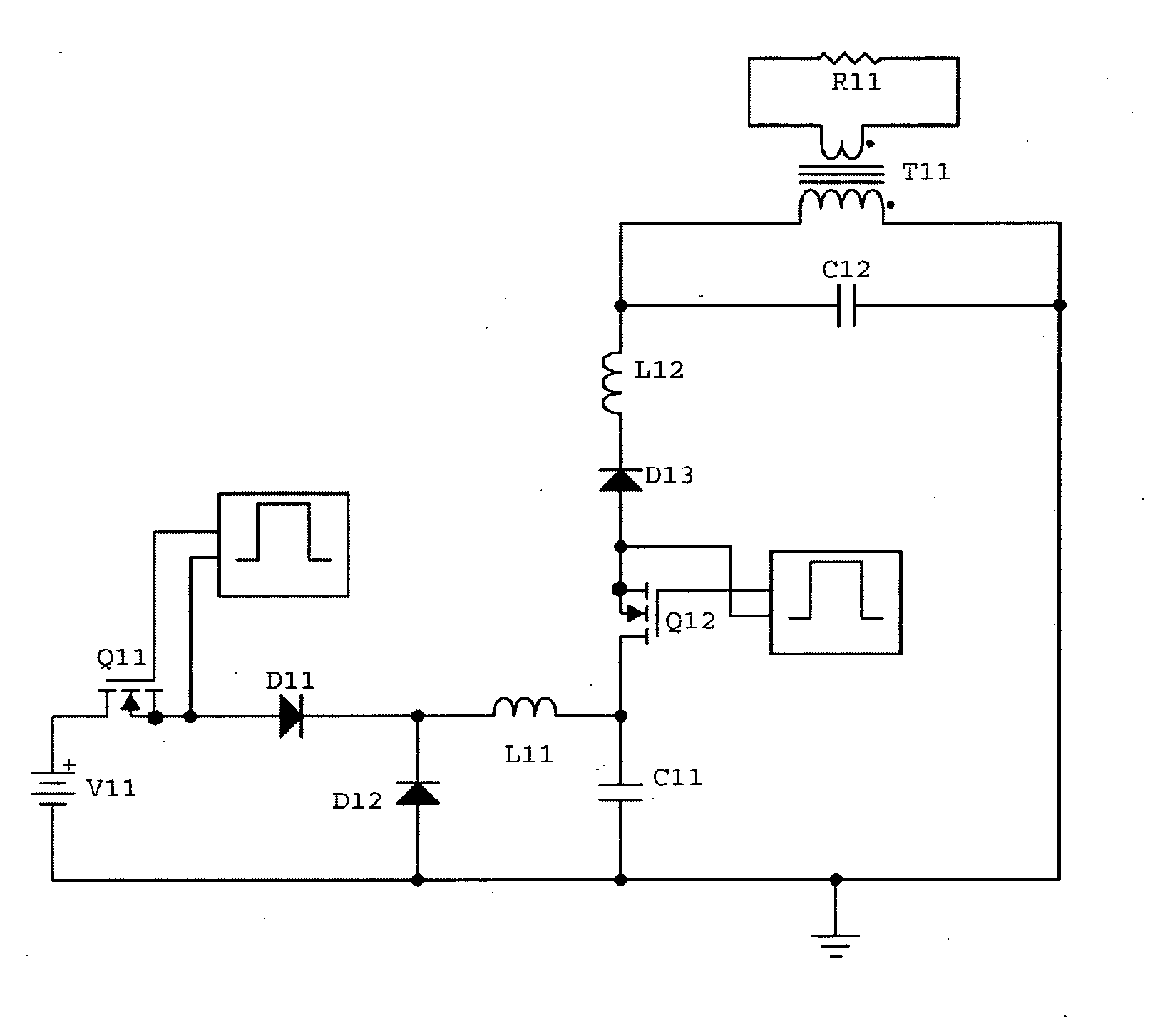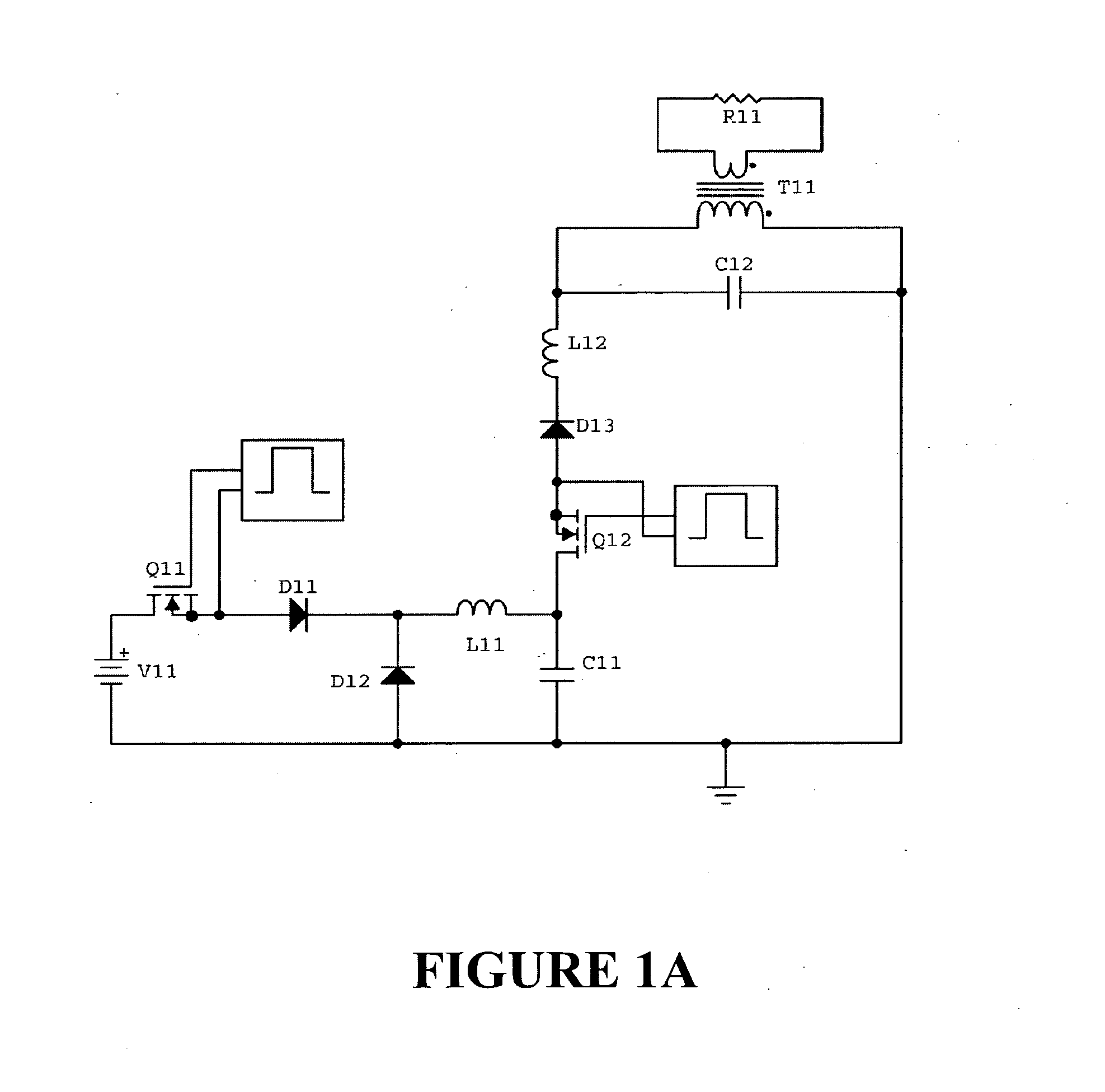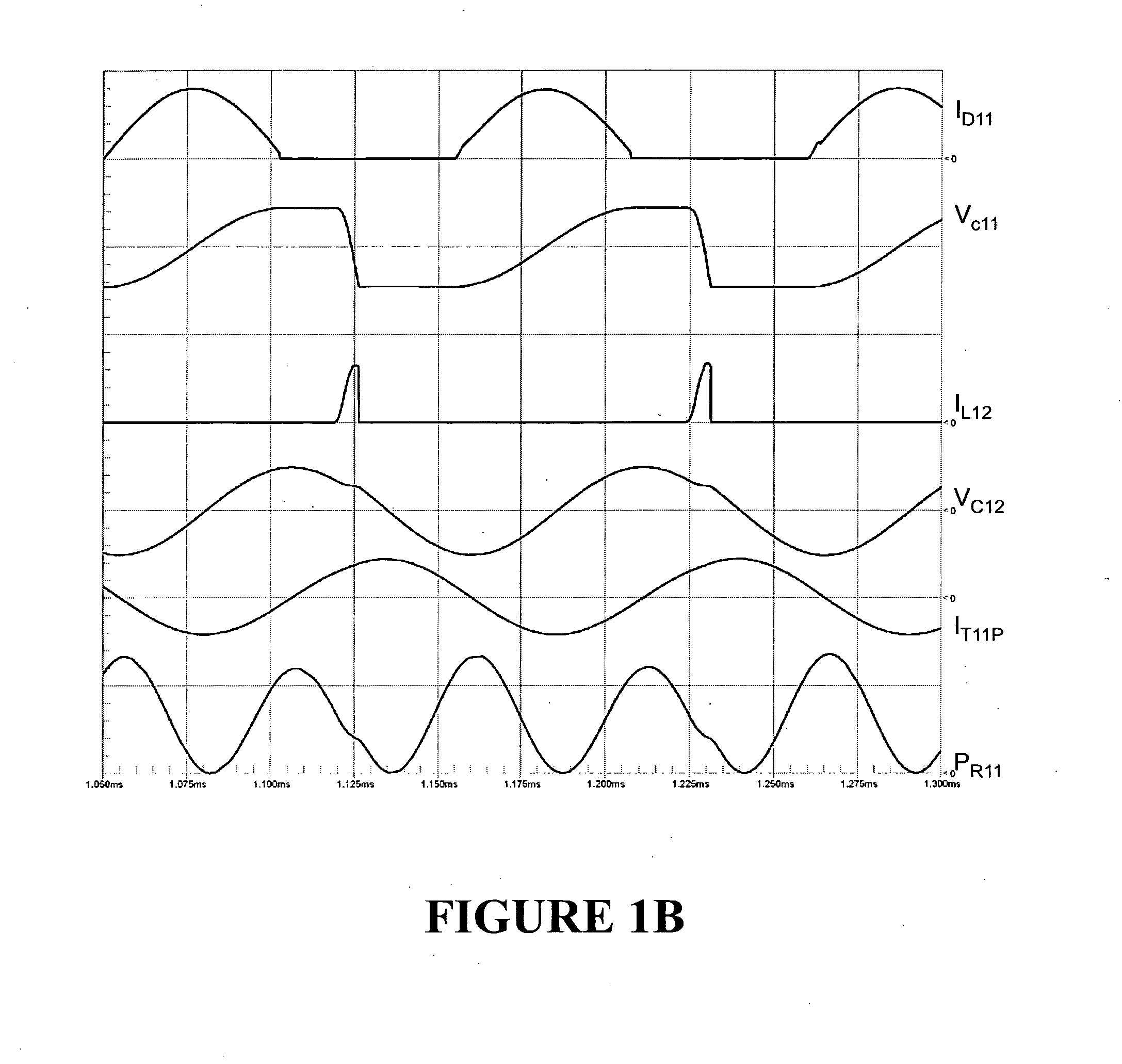Circuit and method for coupling electrical energy to a resonated inductive load
a technology of electrical energy and inductive load, applied in the direction of electric variable regulation, process and machine control, instruments, etc., can solve the problem of reducing the efficiency of circuit energy transfer
- Summary
- Abstract
- Description
- Claims
- Application Information
AI Technical Summary
Benefits of technology
Problems solved by technology
Method used
Image
Examples
first embodiment
[0202]FIG. 1A shows a circuit and FIGS. 1B and 1C show two sets of waveforms, for two specific versions of a first embodiment of the invention. This circuit injects unidirectional current pulses into a parallel resonated load circuit formed by a resonating capacitor C12 connected to an inductive load device. The inductive load device is a work coil of an induction heating system and is represented in FIG. 1A by the primary winding of a loosely coupled transformer T11. The resonating capacitor C12 is continuously connected in parallel with the transformer primary winding. A low resistance load resistor R11 is connected across the transformer secondary winding to represent the work piece of the induction heating system. A DC supply of electrical energy V11 is coupled to the resonated load circuit by a switched coupling circuit.
[0203]As shown in FIG. 1A, the switched coupling circuit includes a charging control transistor Q11, series blocking diode D11, a free-wheel diode D12, a series...
second embodiment
[0255]FIGS. 2A and 2B show a circuit and waveforms for a second embodiment of the invention. This circuit injects unidirectional current pulses into a series resonated load circuit formed by a resonating capacitor C22 connected in series with an inductive load device. The inductive load device is a work coil of an induction heating system and is represented in FIG. 2A by the primary winding of a loosely coupled transformer T21. The resonating capacitor C22 is continuously connected in series with the transformer primary winding. A low resistance load resistor R21 is connected across the transformer secondary winding to represent the work piece of the induction heating system. A DC supply of electrical energy V21 is coupled to the resonated load circuit by a switched coupling circuit.
[0256]A load circuit control transistor Q23 controls the opening and closing of the series resonated load circuit. Oscillating load circuit currents can circulate in one direction (anti-clockwise in FIG....
third embodiment
[0299]FIGS. 3A and 3B show a circuit and waveforms for a third embodiment of the invention. This circuit injects unidirectional current pulses into the inductive leg of a resonated load circuit formed by a resonating capacitor C32 connected to an inductive load device. The inductive load device is a work coil of an induction heating system and is represented in FIG. 3A by the primary winding of a loosely coupled transformer T31. One end of the resonating capacitor C32 is continuously connected to one end of the primary winding of the transformer T31. A low resistance load resistor R11 is connected across the transformer secondary winding to represent the work piece of the induction heating system. A DC supply of electrical energy V31 is coupled to the resonated load circuit by a switched coupling circuit.
[0300]This third embodiment circuit of FIG. 3A operates similarly to the second embodiment circuit of FIG. 2A as described above, with the exception of the injection of current and ...
PUM
 Login to View More
Login to View More Abstract
Description
Claims
Application Information
 Login to View More
Login to View More - R&D
- Intellectual Property
- Life Sciences
- Materials
- Tech Scout
- Unparalleled Data Quality
- Higher Quality Content
- 60% Fewer Hallucinations
Browse by: Latest US Patents, China's latest patents, Technical Efficacy Thesaurus, Application Domain, Technology Topic, Popular Technical Reports.
© 2025 PatSnap. All rights reserved.Legal|Privacy policy|Modern Slavery Act Transparency Statement|Sitemap|About US| Contact US: help@patsnap.com



